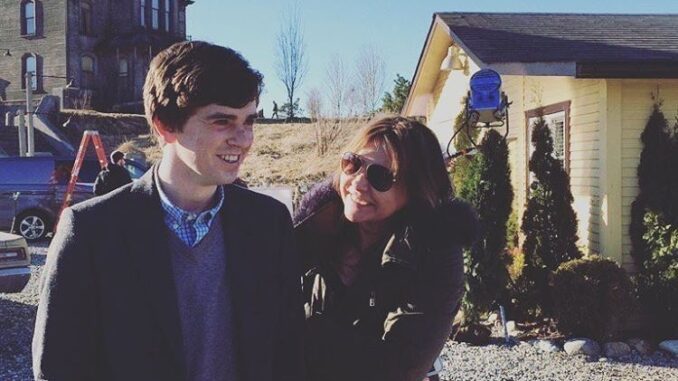
When The Good Doctor first premiered, it was hailed as an intriguing medical drama with a unique twist: a surgeon with autism and savant syndrome navigating the fast-paced world of modern healthcare. But what few expected was how deeply the series would resonate—not only as entertainment, but as a cultural moment that shifted how millions of people perceive neurodiversity.
At the center of the story is Dr. Shaun Murphy, a gifted young surgeon whose abilities in the operating room are matched by his struggles in social environments. He doesn’t look people in the eye. He doesn’t always understand sarcasm or emotional nuance. He’s blunt, methodical, and often misunderstood. But he’s also brilliant, compassionate, and deeply human.
And that’s where The Good Doctor excels.
It doesn’t ask audiences to pity Shaun. It doesn’t reduce him to a stereotype or a plot device. Instead, it challenges viewers to see the world through his eyes—without filters, without apologies. In doing so, the show has not only created a compelling character, but it has also sparked critical conversations about autism in everyday life.
For decades, individuals on the autism spectrum have been underrepresented—or worse, misrepresented—on television. When they did appear, they were often portrayed as quirky geniuses, emotionless robots, or tragic burdens. Rarely were they treated as full, complex individuals capable of love, pain, growth, and success.
The Good Doctor changed that.
By placing Shaun Murphy at the center of the narrative, the series made a bold choice: to portray autism not as an obstacle to be pitied, but as a different way of thinking that can—and does—bring value to the world. Shaun is not a sidekick, a comic relief, or a medical mystery. He’s the hero. He saves lives. He falls in love. He makes mistakes. He learns. And he teaches others, not by trying to be like them, but by being authentically himself.
This representation matters more than most people realize.
For viewers on the autism spectrum, seeing a character like Shaun on primetime television has been nothing short of revolutionary. Social media is filled with heartfelt messages from fans who finally feel seen—who recognize themselves in Shaun’s routines, anxieties, or manner of speech. Parents of autistic children have written about how the show helped them better understand their child’s needs. Educators have used episodes in classrooms to promote empathy. Medical professionals have begun rethinking how they communicate with patients who process information differently.

Of course, no single show can speak for an entire spectrum. Autism is diverse. One character cannot represent every lived experience. And The Good Doctor has faced valid criticism—from those who wish the role had been played by an autistic actor, or who feel the show sometimes leans too heavily into Shaun’s genius as a way to “justify” his presence.
But what makes the show powerful is its intention—and the ripple effects it has created.
It has opened the door for more inclusive casting in Hollywood. It has encouraged other writers and producers to explore neurodiverse stories with more care and authenticity. It has made it harder for audiences to dismiss or caricature people who think and communicate differently.
Beyond media, the impact of The Good Doctor can be felt in the everyday conversations it has sparked. Suddenly, people are talking about what it means to be inclusive—not just in theory, but in practice. Employers are rethinking their hiring practices. Schools are revisiting how they support students with autism. Even hospitals, ironically, are beginning to train staff in neurodiverse communication strategies—mirroring the very setting of the show.
But perhaps the most meaningful shift has been personal.
People are listening more. Judging less. Choosing curiosity over fear.
When Shaun Murphy walks into a room, he forces everyone around him to slow down, pay attention, and reconsider their assumptions. He shows that intelligence can take many forms. That empathy isn’t always expressed through words. That a quiet voice can still make a powerful impact.
In one memorable scene, Shaun tells a patient, “I care even when I don’t know how to show it.” That single line encapsulates the quiet emotional core of the series. It’s a reminder that just because someone doesn’t express love, fear, or sadness in a conventional way, doesn’t mean they don’t feel it just as deeply.
For many, The Good Doctor has become more than a TV show. It has become a mirror, a teacher, and a call to action.
It dares us to make room—for difference, for discomfort, for growth. It urges us to lead with empathy, not just in hospitals, but in homes, schools, offices, and streets. And it proves that storytelling, when done right, can change more than minds. It can change hearts.
As the show continues to evolve, so does the conversation around it. And that may be its greatest legacy—not the ratings or awards, but the lives it has touched and the perspectives it has transformed.
